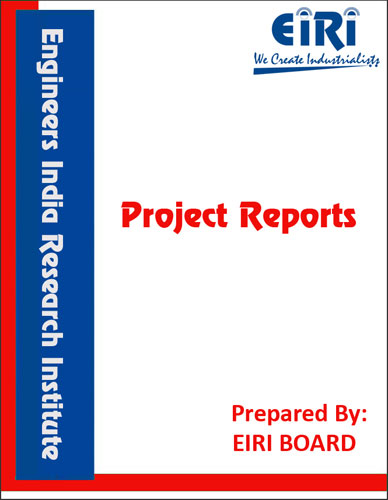The project report includes Present Market Position and Expected Future Demand, Market Size, Statistics, Trends, SWOT Analysis and Forecasts. Report provides a comprehensive analysis from industry covering detailed reporting and evaluates the position of the industry by providing insights to the SWOT analysis of the industry.
Ginger pastes are very versatile products which are used extensively in Food Industries.
A hardy perennial, c60 cm in height, native to Central Asia and cultivated all over India. Bulbs made up of cloves; leaves long, flat, acute, sheahing the lower half of stem; scape slender, smooth, shining, spathes long, beaked, enclosing heads bearing solid bulbils; flowers small, white, prolonged into leafy points.
GINGER PASTE
A genus of rhizomatous herbs distributed in the tropics of the old world, chiefly in India, East Asia and Malaysia. Fourteen, species are reported to occur in India Z-officinale, which is the main source of ginger, is cultivated on a large scale in India. Bangladesh, Taiwan, Jamaica, Nigeria and Sieria, Leone, from which it is exported to other countries the world and ginger is cultivated also for internal consumption in Sri Lanka (Ceylon) and several East Asiatic countries and the crop has been introduced into Queens hand in Australia mainly for pickling.
In Hawaii, ginger is marketed as fresh rhizomes which are also shipped to the mainland market. Two types of edible ginger are grown: the large type known locally as “Chinese” ginger and the small type known as “Japanese” ginger. Only the former type is grown to any great extent. Most of the plantings are in small area. Because of the prevalence of certain diseases on the island of Oahu, the ginger-growing areas seem to be shifting to the island of Hawaii, especially in the vicinity of Hilo from where most, if not all, of the ginger for the mainland market is exported.
The total production for 1960 for the entire State as officially reported was 905,000 pounds from a total of 32 acres. Of this production, 313,000 pounds (34.6 percent) were shipped to the Mainland by steamer without refrigeration. The wholesale value of the shipment was $61,588.00. It is estimated that shipment from Hawaii represents only about 7 percent of the total amount imported into the mainland United States annually, the remainder being supplied by foreign countries. Some foreign sources of ginger are: British Western Pacific Islands, Cuba, Hong Kong and Taiwan (Formosa). It is reported that Hawaiian ginger, because of its higher quality, commands a better price on the mainland market than foreign importations.
Ginger paste is a culinary item and is a direct substitute of ginger and is used in the preparation of food items.
INTRODUCTION
TYPES OF GINGER
COMPOSITION OF GINGER
USES AND APPLICATION
B.I.S. SPECIFICATION
MARKET SURVEY
DETAILED EXPORT DATA OF GINGER PASTE
PRESENT MANUFACTURING/EXPORTERS OF GINGER PASTE
FORMULATION OF GINGER PASTE
MANUFACTURING PROCESS OF GINGER PASTE
PROCESS FLOW DIAGRAM
PROCESS IN DETAILS
FORMULATION
PROCESS FLOW SHEET
GINGER PASTE PACKING MACHINE
PLANT LAYOUT
PRINCIPLES OF PLANT LAYOUT
PLANT LOCATION FACTORS
EXPLANATION OF TERMS USED IN THE PROJECT REPORT
PROJECT IMPLEMENTATION SCHEDULES
GINGER PASTE MAKING MACHINES SUPPLIERS
SUPPLIERS OF RAW MATERIALS
APPENDIX – A :
1. COST OF PLANT ECONOMICS
2. LAND & BUILDING
3. PLANT AND MACHINERY
4. FIXED CAPITAL INVESTMENT
5. RAW MATERIAL
6. SALARY AND WAGES
7. UTILITIES AND OVERHEADS
8. TOTAL WORKING CAPITAL
9. COST OF PRODUCTION
10. PROFITABILITY ANALYSIS
11. BREAK EVEN POINT
12. RESOURCES OF FINANCE
13. INTEREST CHART
14. DEPRECIATION CHART
15. CASH FLOW STATEMENT



